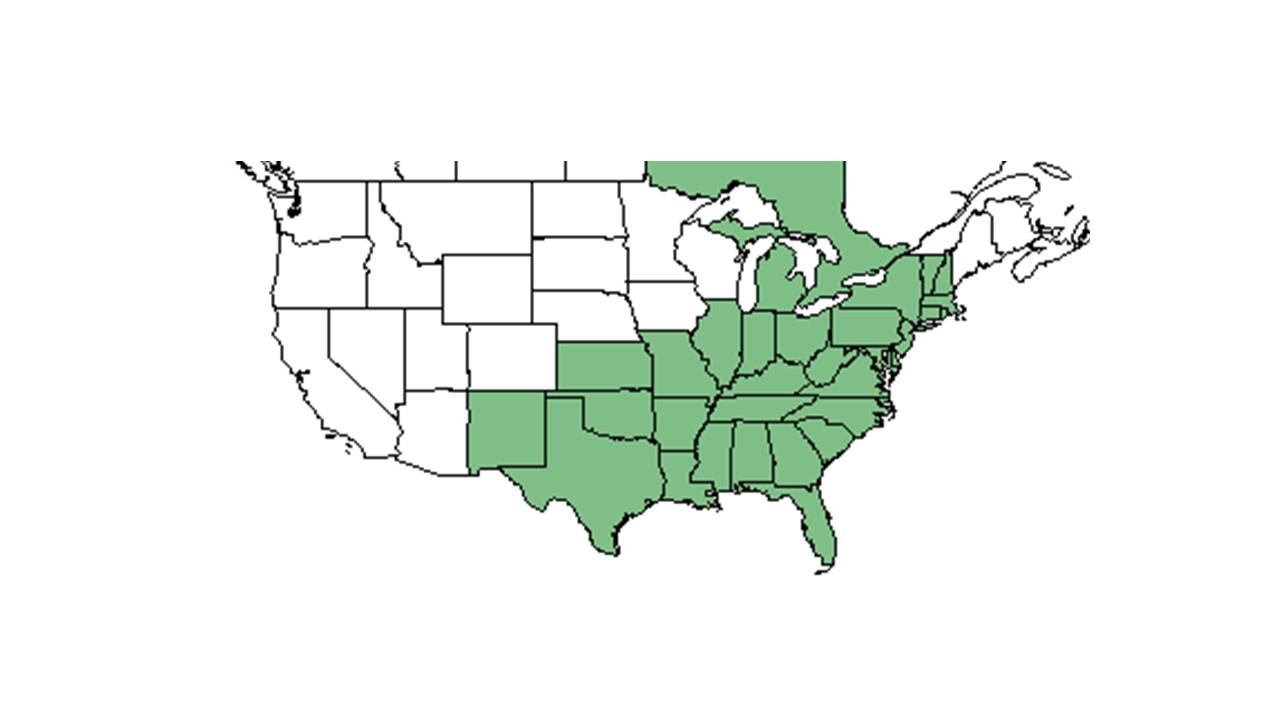Difference between revisions of "Galium pilosum"
(→Ecology) |
|||
| Line 27: | Line 27: | ||
===Habitat=== <!--Natural communities, human disturbed habitats, topography, hydrology, soils, light, fire regime requirements for removal of competition, etc.--> | ===Habitat=== <!--Natural communities, human disturbed habitats, topography, hydrology, soils, light, fire regime requirements for removal of competition, etc.--> | ||
| − | This species has been found in wet flatwoods, mixed hardwoods, longleaf pine-wiregrass savannas, coastal and cabbage palm hammocks, river floodplains, rich woodlands, grassy and shrubby thickets, coastal dunes, sandy ridges, and near ponds (FSU Herbarium). They are found to grow in partial shade and under open canopies of pinewoods in well drained moist sandy soils, drying loamy sands, limestone outcrops, or dry loamy sands during drought (FSU Herbarium). They also have been observed growing in areas disturbed by humans such as picnic areas, along roadsides, in powerline corridors, along trails, on sand pine plantations,in borrow pits, on bulldozed areas, and in "battered" limestone glades (FSU Herbarium). | + | This species has been found in wet flatwoods, mixed hardwoods, longleaf pine-wiregrass savannas, coastal and cabbage palm hammocks, river floodplains, rich woodlands, grassy and shrubby thickets, coastal dunes, sandy ridges, and near ponds (FSU Herbarium). They are found to grow in partial shade and under open canopies of pinewoods in well drained moist sandy soils, drying loamy sands, limestone outcrops, or dry loamy sands during drought (FSU Herbarium). They also have been observed growing in areas disturbed by humans such as picnic areas, along roadsides, in powerline corridors, along trails, on sand pine plantations,in borrow pits, on bulldozed areas, and in "battered" limestone glades (FSU Herbarium). Associated species includes ''Smallanthus, Schisandra, Collinsonia, Nyssa, Ulmus, Pinus, Quercus, Carya, Aristida stricta, Acer, Magnolia, Ilex, Aesculus, Pinus elliottii, Giallardia pulchella,'' and ''Quercus laevis''. Also includes cabbage palm (FSU Herbarium). |
| − | |||
| − | Associated species includes ''Smallanthus, Schisandra, Collinsonia, Nyssa, Ulmus, Pinus, Quercus, Carya, Aristida stricta, Acer, Magnolia, Ilex, Aesculus, Pinus elliottii, Giallardia pulchella,'' and ''Quercus | ||
===Phenology=== <!--Timing off flowering, fruiting, seed dispersal, and environmental triggers. Cite PanFlora website if appropriate: http://www.gilnelson.com/PanFlora/ --> | ===Phenology=== <!--Timing off flowering, fruiting, seed dispersal, and environmental triggers. Cite PanFlora website if appropriate: http://www.gilnelson.com/PanFlora/ --> | ||
| Line 43: | Line 41: | ||
===Use by animals=== <!--Herbivory, granivory, insect hosting, etc.--> | ===Use by animals=== <!--Herbivory, granivory, insect hosting, etc.--> | ||
===Diseases and parasites=== | ===Diseases and parasites=== | ||
| + | |||
==Conservation and Management== | ==Conservation and Management== | ||
==Cultivation and restoration== | ==Cultivation and restoration== | ||
Revision as of 20:52, 14 December 2015
| Galium pilosum | |
|---|---|

| |
| Photo taken by Kevin Robertson | |
| Scientific classification | |
| Kingdom: | Plantae |
| Division: | Magnoliophyta - Flowering plants |
| Class: | Magnoliopsida – Dicotyledons |
| Order: | Rubiales |
| Family: | Rubiaceae |
| Genus: | Galium |
| Species: | G. pilosum |
| Binomial name | |
| Galium pilosum Aiton | |

| |
| Natural range of Galium pilosum from USDA NRCS Plants Database. | |
Common name: hairy bedstraw
Contents
Taxonomic notes
Description
Distribution
Ecology
Habitat
This species has been found in wet flatwoods, mixed hardwoods, longleaf pine-wiregrass savannas, coastal and cabbage palm hammocks, river floodplains, rich woodlands, grassy and shrubby thickets, coastal dunes, sandy ridges, and near ponds (FSU Herbarium). They are found to grow in partial shade and under open canopies of pinewoods in well drained moist sandy soils, drying loamy sands, limestone outcrops, or dry loamy sands during drought (FSU Herbarium). They also have been observed growing in areas disturbed by humans such as picnic areas, along roadsides, in powerline corridors, along trails, on sand pine plantations,in borrow pits, on bulldozed areas, and in "battered" limestone glades (FSU Herbarium). Associated species includes Smallanthus, Schisandra, Collinsonia, Nyssa, Ulmus, Pinus, Quercus, Carya, Aristida stricta, Acer, Magnolia, Ilex, Aesculus, Pinus elliottii, Giallardia pulchella, and Quercus laevis. Also includes cabbage palm (FSU Herbarium).
Phenology
This species has been observed flowering from June through August and October through November and fruiting from June through November (FSU Herbarium).
Seed dispersal
Seed bank and germination
Fire ecology
This species can be found in annually burned pinelands (FSU Herbarium).
Pollination
Use by animals
Diseases and parasites
Conservation and Management
Cultivation and restoration
Photo Gallery
References and notes
Florida State University Robert K. Godfrey Herbarium database. URL: http://herbarium.bio.fsu.edu. Last accessed: June 2014. Collectors: Loran C. Anderson, R.K. Godfrey, Robert Kral, Cecil R Slaughter, Gil Nelson, W. H. Lewis, R. A. Norris, R. F. Doren, Chris Cooksey, R. Komarek, M. Davis, Lisa Keppner, Thomas E. Miller, C. Jackson, Gwynn W. Ramsey, R. S. Mitchell, H. Larry Stripling, Mabel Kral, and Wilson Baker. States and Counties: Florida: Citrus, Clay, Franklin, Gadsden, Gulf, Hernando, Jackson, Leon, Levy, Liberty, Nassau, Okaloosa, Santa Rosa, Suwannee, Wakulla, and Washington. Georgia: Grady and Thomas.